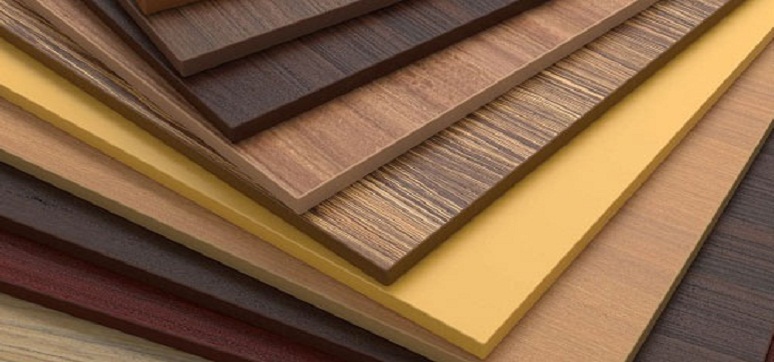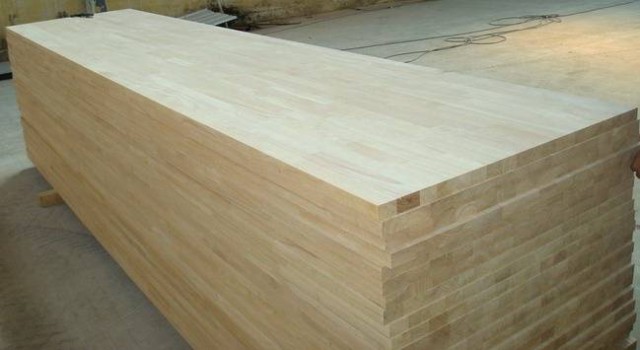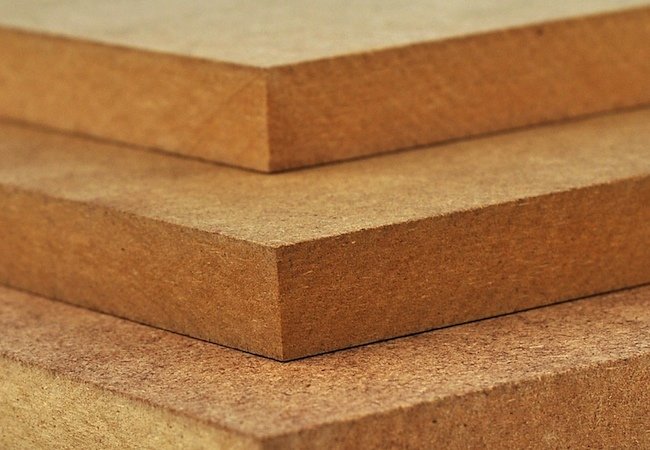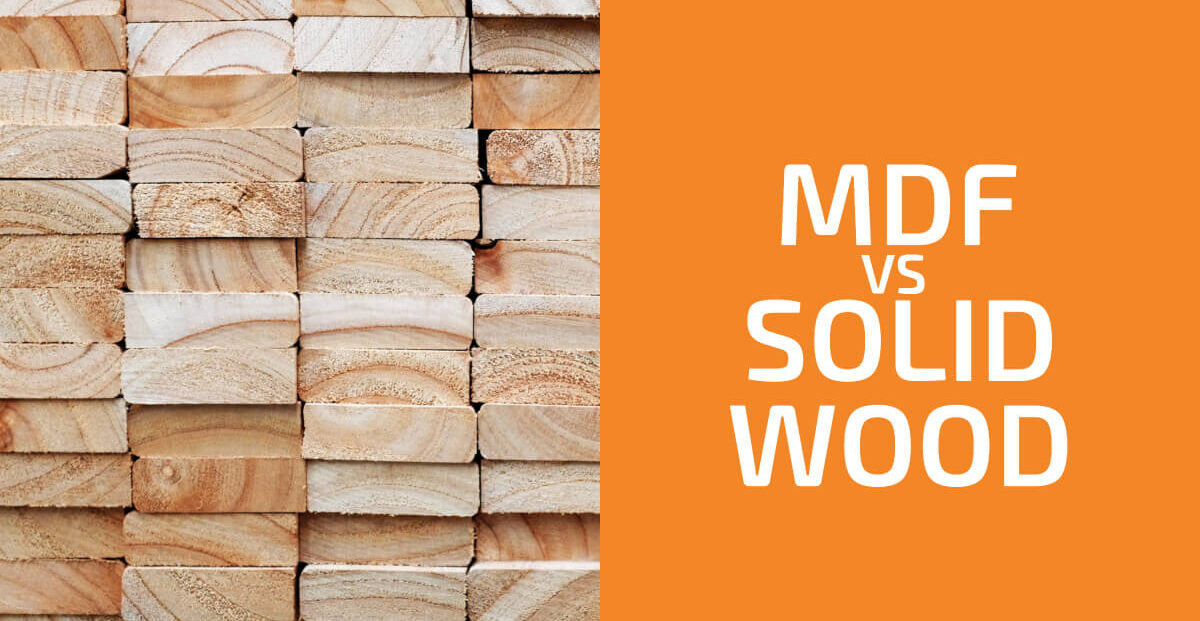Choosing the right material for your home’s interior, whether for structural elements or furnishings like cupboards, cabinets, and shelves, is crucial.
Two popular choices are Medium-Density fiberboard (MDF) and solid wood, each with unique characteristics and applications.
Understanding the variety and properties of these materials is vital, especially if you’re considering a DIY renovation. Being informed about your choices ensures you invest in materials that align with your needs and preferences.
This guide explores the distinctive features, pros, and cons of MDF and solid wood, helping you decide on your home projects.
Types of Wood: MDF vs Wood
In the world of home renovation and interior design, wood materials primarily fall into two categories: Solid Wood and Medium-Density Fibreboard (MDF).
- Solid Wood: This category represents the traditional, natural wood sourced directly from trees. Each type of solid wood, such as oak, cedar, or maple, brings its own unique characteristics.For instance, oak is known for its strength and durability, making it ideal for load-bearing structures, while cedar is favored for its resistance to decay and moisture, perfect for outdoor applications.
- MDF (Medium-Density Fibreboard): MDF, often termed engineered wood, is made by breaking down hardwood or softwood residuals into wood fibers. This is then combined with wax and resin binder and formed into panels by applying high temperature and pressure.Its uniform density and smoothness make it excellent for detailed and precise work, especially in furniture and decorative elements.
Each type has its distinct advantages and ideal uses, making them suitable for various applications in home construction and design.”
1. Solid wood

Solid wood, which is often called the natural or usual variety, is the type of wood you think of when you hear the word “wood.” They are extracted more naturally and have been in use for centuries.
They are used in making a lot of things like wooden doors and sofas. Solid wood is also used in giving structure to your house and as a pillar. Solid wood has a natural beauty which makes it more desirable for decorative purposes.
Many times, no extra painting is applied to the furniture as the wood’s surface looks very attractive on its own. Solid wood can also be distributed into various types, but the most used reliable wood varieties are plywood and finger joint pine.
2. Plywood

Plywood is a standard type of solid wood generally used to make beds, tables, cabinets, shelves, etc. Plywood is also used in building walls and ceilings. Its manufacturing process is quite amusing and jaw-dropping.
It has been manufactured since old times, but it was the industrialization and coming off big machinery that led to its large-scale manufacturing and widespread use.
It is manufactured from the trunk of the tree. The tree is first cut, and the bark is removed. The surface is made even, and thin sheets are rolled out from the trunk against a sharp edge.
These thin sheets of wood are then layered one over the other in a perpendicular fashion (meaning that the length of one ply is aligned with the breadth of the one above and below it).
The layers of two wooden sheets have a mixture of adhesive in between to keep the ply intact. They have beautiful patterns that act as decor and are best used without paints.
Plywood is used across the nation to construct houses and furniture and is made from fresh wood. Most people generally prefer it because it is perceived to have top quality. But do not decide so early as it might not be the best option for you and you might waste money.
3. Finger Joint Pine

The other variety of solid wood is its finger joint pine. This is a very innovative method to prepare long wooden planks or blocks out of small ones. As the name suggests, two different wood pieces are joined with each other in an interlocking fashion.
Fingers like projections are made at one end of the plank, and the corresponding projections are made in the other plank. To make sure that the joint is strong enough to avoid breaking up, a glue solution is also used.
The furniture prepared out of finger joint pine must be painted as the two planks’ design does not match and give a very absurd look if not painted.
Advantages of Solid Wood
Solid wood has a lot of advantages to offer.
1. Strength and Durability
Solid wood is stable and can carry lots of weight. It is always a go-to option for most people if a lot of stress is given to strength and durability. You can quickly put nails on its surface without getting tensed about whether it would spoil the plywood.
The more layers, the more rigid and robust the plywood gets. Plywood, after applying water-resistant, can also be used in an external environment without fearing the damage caused by external forces like humidity and heat.
Strength and durability are also dependent on the type of tree used for making the plywood. Cedar is less durable than oak plywood. If you want the plywood to be highly durable, you should go for plywood made from red oak.
2. Aesthetics
When it comes to aesthetics, solid wood leads the game by miles. There is no room for comparison between a painted MDF ply and natural plywood. They boast beautiful grains that cannot be replicated on any surface. They make the furniture appear as decors and increase the aesthetic value of the house. So much so that your house becomes the inspiration for your family and friends.
3. Variety
Solid wood can come in a variety of shapes and sizes. Different varieties of shapes are available in the substantial wood market, from pillars to plies to the crown. And if the size is needed to be increased, it can also be increased using the standard finger method.
Either way, you will not run out of options in the substantial wood segment. Also, solid wood can come from different sources like from red oaks to white oaks to cedar. There is an option for everyone.
Disadvantages Of Solid Wood
Like everything else on this planet, solid wood also comes with its own set of disadvantages which you should pay heed to before making a purchase decision.
1. Warping and Cracking
With the temperature change, the shape of the solid wood is also affected. This is not a problem as it is a natural phenomenon but what is concerning is the fact that the temperature change also leads to warping of the plywood and even cracking in some cases.
Both warping and cracking could hamper the house’s decor as the cabinets made of plywood start looking odd and may not fit in sometimes. This is also one reason why paint is not applied on solid wood, as the cracks on its surface could damage the look.
It is essential to be aware of this problem before purchasing solid wood for your cabinets and doors.
2. Finger Joint Is Not Fit for Heavy Loads
Finger joint pine cannot support heavy loads as it is weaker at the joint. It can easily break when compared to plywood. Hence always make sure that you do not use finger joints to make shelves and if you do, then make sure not to put a lot of load on it.
3. Bug Damage
Solid wood, unlike MDF wood, acts as a beacon for bugs and other insects and hence has higher chances of getting damages due to these bug attacks. The vast money you spend on plywood for its natural beauty can be compromised because of few pesky insects. Ensure that the plywood is treated with proper chemicals that will keep a check on bug infestations and damage.
4. High Costs
Solid wood is costlier than MDF wood and adds a lot of burden on your budget. Although there is no standard price for the product, the price depends on different factors like the size and the quality of wood being used.
But it is quite evident that ordinary-sized plywood comes at double the price of MDF wood of the same size. If you do not have a big budget, you may want to reconsider whether to buy plywood or go with MDF wood.
These were some advantages and disadvantages of solid wood that you must know before making a purchase decision.
Now the other variety of wood available in the market is a new product compared to the traditional solid wood and is a result of innovation.
MDF Wood

MDF is an entirely different variety of wood in terms of structure. But it is also made of wood and not any alternate material. MDF is composed of wood fibers that are obtained after processing the leftover wood from the furniture industries. Heavy machinery is involved in the processing of the leftover wood. These machines can convert the solid wood into fine threads within minutes.
These fine threads are then mixed with adhesives and resins and are compressed using pressure and heat to form solid MDF sheets that have a very smooth surface. It is generally painted as its surface does not appear intriguing. With time, their uses have expanded, and they are used in making cabinets, doors, windows, tables, shelves, and a plethora of different items.
It is used widely across the USA, even though it was once rumored to be banned in the US in the 1990s because of the health complications brought due to formaldehyde. Formaldehyde can cause cancer on consumption, and the dust produced when working on it was deadly for the carpenters. But it is not harmful as a product itself as it is well coated with primer and paint, and hence you are free from consuming it.
Let us now look at some advantages and disadvantages of MDF wood and find out whether it is worth it or not.
Advantages of MDF Wood
1. MDF Does Not Warp and Crack
Unlike its counterpart, solid wood, MDF wood does not warp and crack. Yes, it is composed of wood to contract and expand with temperature change, but the change of shape happens in a unit form, and hence there is no visible warping that could be a problem.
MDF, because it is resistant to warping and cracking, does not cause any damage to the paint applied on it, and hence the furniture does not look odd to the eyes.
2. Low in Cost
As already mentioned, MDF wood is less costly than solid wood, and the reason behind this is because it is produced from leftover or recycled wood, which is less costly, and sometimes they do not cost at all. This makes it a very budget-friendly option that you will want to go with if you have budgetary constraints. MDF plies could be half as costly as ordinary plywood.
3. Environment Friendly
Using MDF wood also comes with the pride of doing something for the environment. This is because MDF wood is made up of recycled wood or leftover wood that would have been thrown in a landfill. This way, MDF wood leaves a 0-carbon footprint. Given the problem of deforestation and the growing global warming issue, large-scale use of MDF could help the environment a lot.
4. Variety of Sizes
Because MDF wood is engineered wood, it can come in various shapes and sizes depending on your needs.
5. Smooth Surface and Refined Cutting
MDF has a very smooth surface because it is composed of such tiny particles. Also, the benefit of having MDF is that you can make fair and smooth cutting at the edges, which is impossible when using plywood. This makes working with MDF a lot easier, and you can easily use it to give the furniture a decorative edge.
Disadvantages of MDF Wood
MDF wood comes with disadvantages of its own that should not be overlooked.
1. Sag Overtime
If you have an MDF ply or shelf or a table and are topped with some articles, then the chances are that the surface will sag over time due to the weight. Once the surface has sagged, it can be trusted with those articles and needs to be replaced. But the MDF ply would last for a significant amount of time before the sag becomes drastic and hence the price you pay for it is worth it.
2. Cannot Withstand Water
The tiny particles in MDF wood absorb and transfer water very quickly. Hence even if the single point is exposed to moisture, the whole furniture is exposed to danger. When MDF absorbs moisture, it crumbles, weakens, and breaks down. Make sure that a water-resistant primer is applied to the product before installing it. Also, make sure that the paint is not eroded.
3. Is Not Good for Putting Nails
MDF wood is also not good for putting nails on it as the ply’s surface is forced out, and it becomes awful. Therefore, when using nails on an MFD surface, try to use small nails because big nails can cause problems.
4. Gets Scratched Easily
MDF plies also get scratched easily because they are composed of tiny particles. When solid wood is scratched, the surface can be made even again by rubbing it with sandpaper, but the same cannot be done in MDF wood. Therefore, if the piece of furniture is vulnerable to harsh weather, it is better not to use MDF wood.
How to Decide Between MDF Wood and Solid Wood

The decision between MDF wood and solid wood is something that people face a lot of problems with. So, to decide between you should compare based on the following factors.
- Price: If you are short on budget, then you should go with MDF. But if budget is not the issue, then go for solid wood.
- Durability: Solid wood is way more durable than MDF if kept carefully. If you are not looking for something that would last for an extended period, go for MDF.
- Environment: If you want your house to be environmentally friendly, use MDF as it is made from recycled wood and leaves zero carbon footprint.
- Uses: The uses also determine the choice. If you want a cabinet or a cupboard in your bedroom or your dining room, you may go for MDF, but in areas high in moisture, like the kitchen and the bathroom, always go for plywood. MDF is also not a good option for outdoor furniture as it may get spoilt very easily.
Conclusion
Both MDF wood and solid wood are convenient, and the one best for you depends on your needs and other factors. In some cases, MDF is a better option than solid wood; in others, it is the opposite.
Try to first identify requirements and budget before looking for the product, as it will save you a lot of time, and you will also not be wasting money. Also, make sure to do proper research before purchasing.
Now that you know the difference between MDF wood and Solid wood, you can educate others about it.

